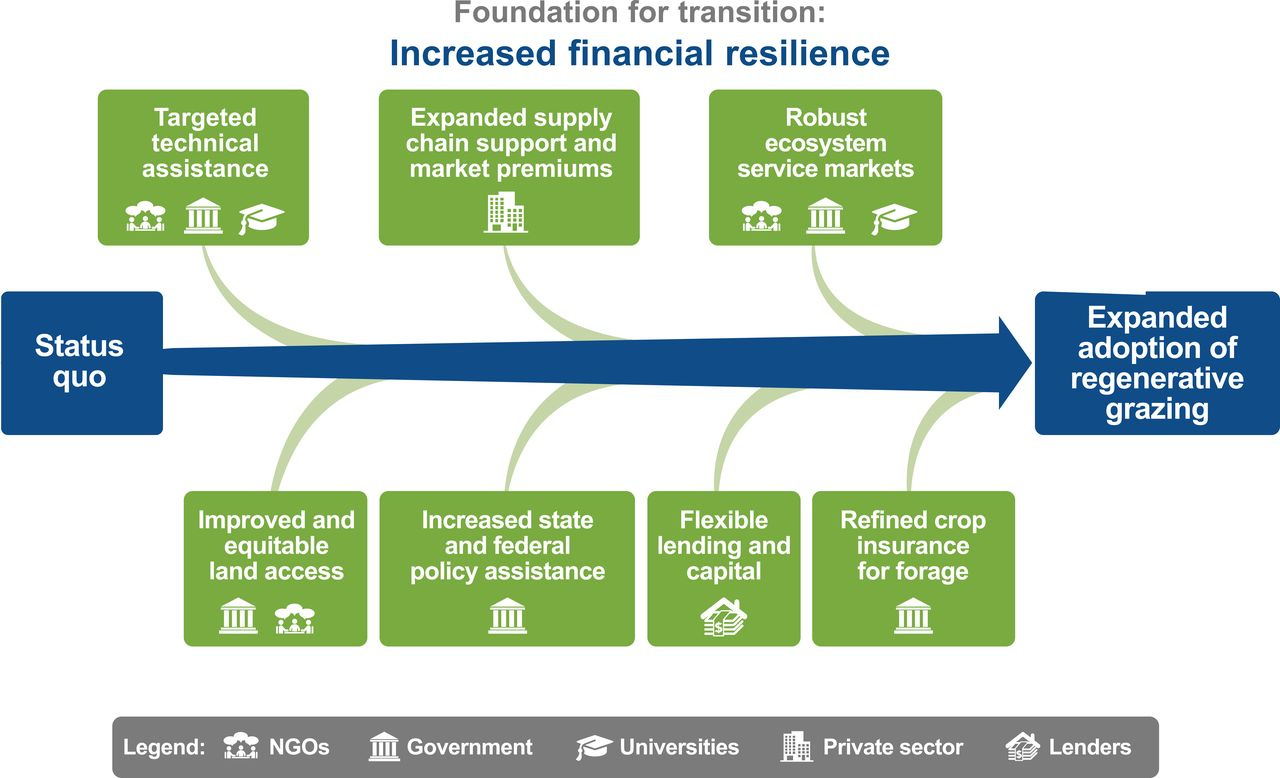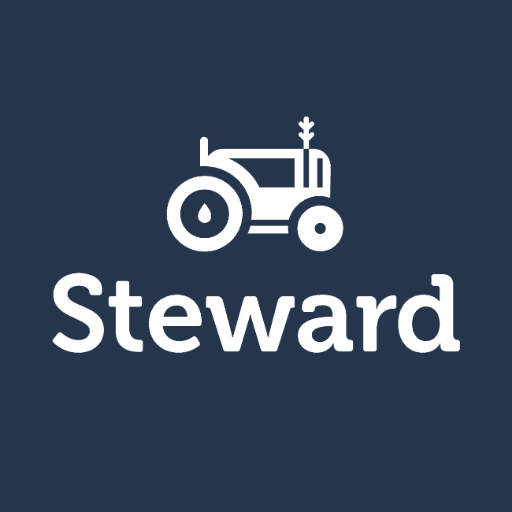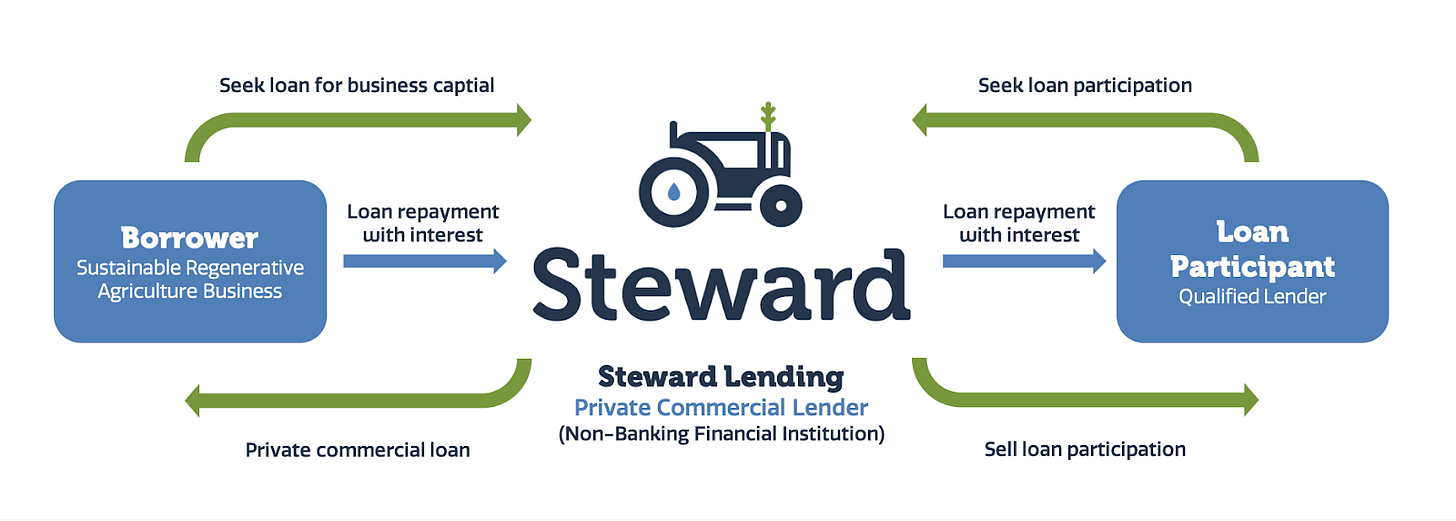🚜Financing the Regenerative Ag Future: Spotlight on Steward Founder Dan Miller
While we focus our efforts on flashy and promising technology in the agricultural arena, the plumbing providing capital and market access for producers serves as a foundational infrastructure for scaling regenerative agriculture. This week, we explored this space by speaking with Dan Miller, founder and CEO of Steward, a private lending platform providing regenerative farmers and ranchers with the capital and technical support necessary to scale their operations. Steward has recently raised an $8.8M Series A round from excellent investors across the board.
Dan’s Story: Why Regenerative, Why Now
Dan’s story is archetypical of successful entrepreneurs entering and pushing forward the regenerative food movement. His mother’s family has farmed in the Chesapeake Bay since the 1800s and he grew up seeing a biodiverse and dynamic ecosystem depleted by industrial agriculture. His major first startup, Fundrise, is a tech platform built for giving investors access to high-quality real estate investments. It was with Fundrise that Dan learned the demand for “assets with a story” and the regulatory technological infrastructure of raising money online.
Dan’s first interest in regenerative came through meeting James Beard award-winning chef Spike Gjerde of Woodberry Kitchen in Baltimore. Spike introduced him to regenerative farmers he was directly sourcing from. Dan immediately realized a market imbalance: while there was exploding consumer demand for regeneratively produced foods, the availability of funding for these typically smaller, diversified farms was effectively unchanged. In a capital system designed for funding large commodity farms, there was little government or bank funding available for the smaller, sustainable operations and no private and alternative capital available. In diving into books like Wendell Berry’s Unsettling of America, an underlying theory of macro-level change emerged for Dan: as he put it, “commodity production is not necessarily the way of things” and so, an alternative system based on value flowing to local communities should emerge.
Building on his experience at Fundrise, Dan started leveraging his network and learning by doing. The Millers funded Steward’s first 16 loans to regenerative operations in 2016 onward and began figuring out what economic propositions are needed to scale regenerative operations. Put simply, Dan focused on two key levers to meet the growing demand for regenerative foods: financing increased on-farm production and getting greater access to markets, both buoyed by hands-on technical assistance. Dan was focused on working with principles-based producers who, in many cases, have gone against the agricultural grain for years.
Throughout our conversation, Dan and I dove into three key areas:
Successful financing requires flexible capital structures and hands-on technical support.
As of now, Steward has faced no losses/delinquencies, which Dan credits to Steward’s holistic approach. Unlike commercial real estate lending, Steward’s theory of change relies on providing comprehensive technical support and enough capital to backstop the deal. Many projects on Steward, like the Astoria Food Hub project in Oregon that raised $700,000 in its “Phase I” lending, finance shared infrastructure projects to unlock greater market access and scale. The food hub, for example, will provide producers with a base for storage, processing, distribution across the board. In one of the few cases where Steward has had to adjust payment schedules, a dairy operation that built a value-added processing facility was awaiting governmental inspection for months. The need to adapt to changing market conditions requires nimble administrative prowess and regulatory expertise that a full-time producer does not necessarily have time for. Steward helped find a new series of buyers for their new products and accelerated the inspection process in the face of potential operational paralysis.
Though the first step of changing practices on-farm allows for greater ecological benefits and, in many cases, farm productivity, the farmer needs to get their product to market, and this requires distribution, processing, inventory management, and so forth. Dan highlights the need to re-regionalize agricultural processing to create networks that aggregate and share resources - not unlike co-operative models that have existed for centuries. Dan has a clear thesis that simple technology and business tools, not complex on-farm technology, will pave the way for regenerative agriculture. AgTech is a complex, expensive, and small part of the market, while farmers need to learn techniques, buy equipment and tools, and continually adapt to shifting market dynamics. That’s why lack of trusted technical assistance remains perhaps the biggest barrier to regenerative agriculture. Indeed, for the few farms operating at the highest level, AgTech adoption can make a difference, but for the vast majority, farm support services and business tools will lead the way. That’s why Steward originates and services loans while providing ongoing support.
Tackling transition financing to regenerative agriculture and working with existing regenerative producers require distinct paradigms - but both are necessary.
Much of the discussion surrounding funding regenerative agriculture farms is focused on the point of transition. For example, RePlant Capital recently announced their intention to raise $2 Billion to provide “catalytic capital” at the moment of transition focused on soil health metrics. Mad Agriculture launched the Perennial Fund (I highly recommend reading this white paper), which provides farmers with technical assistance and capital to help folks transition to organic. The Perennial Fund, with roughly $10M raised includes funding from a USDA Conservation Innovation Grant, Patagonia Clothing Company, and others. However, in earlier profiles of RePlant Capital’s first aim to raise $250M, early recipients of loans include legendary regenerative rancher Will Harris and McCarty Family Farms, which has been focused on environmental impact. Additionally, at the recent Regenerative Food Systems Investment Forum, I heard Mad Agriculture’s Phil Taylor speak of the need to work with producers predisposed to a regenerative mindset, though they may be in different gradients of their transition to organic. Players in the innovative farm financing space are grappling with the trade-offs of working with transition and scale-up capital.
For Dan and Steward, growing regenerative operations is the key focus, as turn-arounds are much more difficult than growth funding. On top of all the technical assistance required to scale regenerative, transition financing requires a paradigm shift for the producers and a tabula rasa mentality with regards to finding processing and markets, changing processes, and committing to a regenerative way of thinking. As Dan put it, we “can’t dismantle a global ag system built in 100 years in 10.” Growing regenerative operations provides a paradigm for transitioning growers on why it is worthwhile to transition, while also acknowledging that an ill-conceived transition can ruin the operation if not done properly. One of the few transition financing projects on Steward, Williams Vegetable Farm, is working with a local non-profit that brought forth the project proposal and provides extensive technical assistance. While transition financing is important, the capital risks associated with it are extensive, and perhaps it’s important to think about who can bear those risks, be it through governmental policy, non-profit/philanthropic investing, or within corporate supply chains.

“Assets with stories” provide a compelling opportunity for investment beyond philanthropic capital
On the other hand, thinking about why regenerative agriculture financing is a competitive financial opportunity merits consideration. At face value, Steward offers to pay lenders rates with a target of 5-8%. However, while there are a lot of places people can put their money to get a profit, or even to diversify their portfolio, a product with a story, reasonable returns, and mission can particularly attract retail, family offices, and high net worth individual interest. As we have discussed on The Regeneration Weekly, farmland has emerged as an attractive asset class to both institutional and retail investors. Regenerative agriculture is particularly interesting because the products are tangible, especially when compared to other ESG investments that are more abstract or intermediated. The human element of connecting with farmers additionally brings an opportunity to be hands-on - especially if folks are looking for a regional focus or product focus area.
However, Dan remains skeptical about the involvement of institutional capital in the space: as he quipped, “it will make its way to regen when risk is off the table.” Part of the reason is the unpredictable and complicated nature of diversified, value-added, direct-sale agricultural businesses when compared to conventional farming operations. For example, one of Steward’s first loans to an urban farm in Detroit grew over 12x in revenue in a three years and still could not get a traditional refinancing. In essence, per Dan’s analysis, farm credit lenders are based on rural templated deals that will not accommodate regenerative any time soon. The same goes, in many cases, for larger private equity and risk capital pools: money is flowing to indoor vertical farming startups, for example, but how can we effectively get money to a regenerative operation in Kansas to scale their ecological restoration?
As a B-Corporation, part of the attractiveness of Steward’s products to funders lies in focusing on answering that question. They do not exclude smaller farmers who need access to capital markets - even if the loan amount is $10,000 - and accommodate working with “offline” farmers who are not as tech savvy. For example, see this $25,000 loan to the Florida Oyster Trading Company to build a micro-nursery - potentially catalytic capital to pushing forward regenerative oyster production in the Pensacola Region.
Steward’s model and preliminary success give food for thought. There are symbiotic mechanisms needed to scale regenerative operations and transition folks to it, but it needs to occur on various levels. Smallholder farmers deserve these services as much as larger producers. A parting key example is the Steward Foundation, which provides charitable funding to pass on to farmers as low-interest or subordinated capital. In particular, Steward serves as an “administrative tech stack” for servicing this charitable giving. “You can’t have a hands-off attitude” when it comes to facilitating money in a highly regulated industry, as Dan states. Farmers didn’t get in their line of work to fill out paperwork - and doing so effectively, at scale, provides an unsung service to both investors and producers. Creating these flexible structures to meet producers where they are will be essential to making regenerative financing work.
We want to hear from you!
Take our survey on regenerative beef to be entered to win a $200 gift card to getwholesome.com. You can find the survey here!
Invest: Steward Regenerative Capital is a short-term lending product that provides producers with the capital needed to keep growing. Lenders receive monthly repayments with fixed 4.5% interest (APR) through a 9-month loan. This particular product targets growers with short-term financial needs to maintain continuous production or pursue time-sensitive opportunities. Steward Regenerative Capital has raised over $3,000,000 to date and funded 7 projects across the country.
I also highly recommend y’all check out the successfully funded projects in Steward’s portfolio and support them if you’re local!
Disclaimer: The Regeneration Weekly receives no compensation or kickbacks for brand features - we are simply showcasing great new regenerative products.
If you have any products you would like to see featured, please respond to this newsletter or send an email to Kevin(at)soilworksnaturalcapital.com
The Regeneration is brought to you by Wholesome Meats | Soilworks | Grassroots Carbon| Grazing Lands



